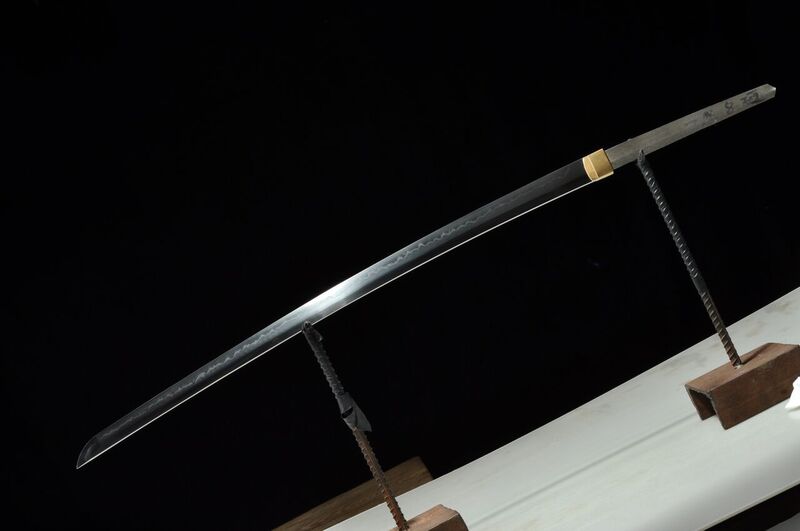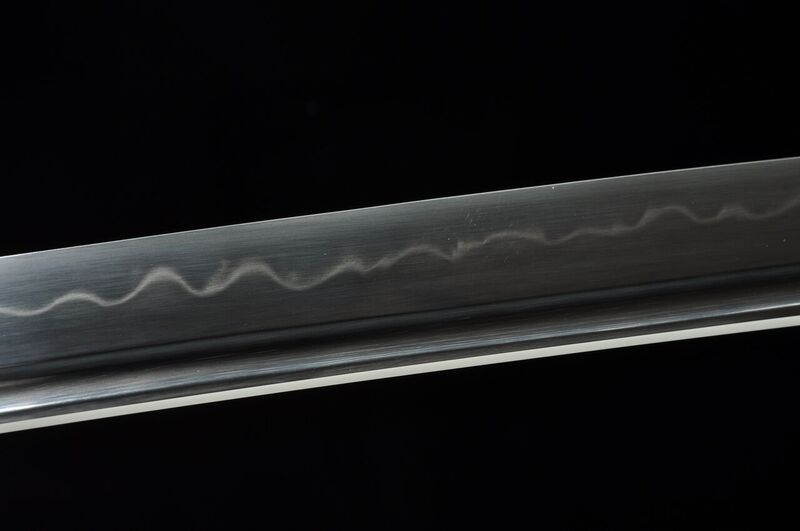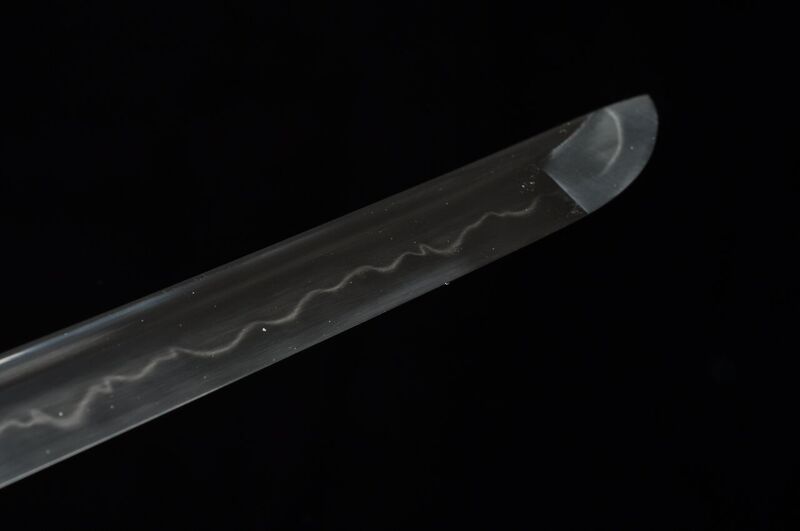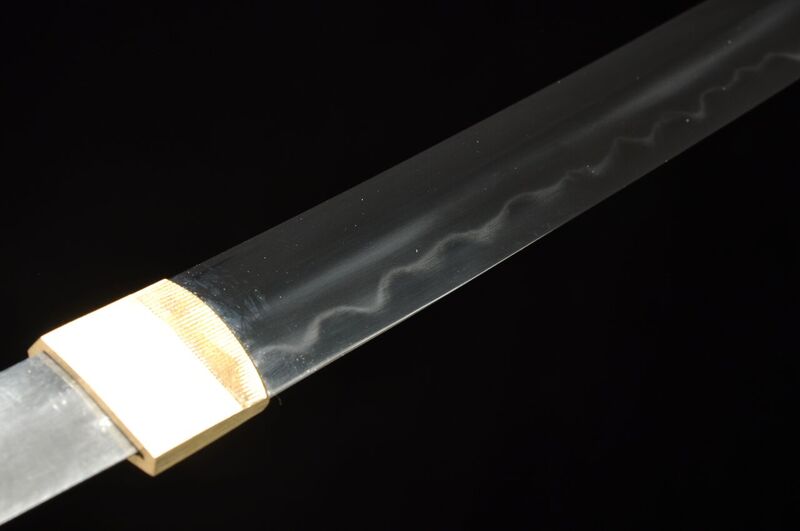Recent Articles
-
Real Katana Pushed to the limits
Mar 07, 25 01:16 AM
Ryujin Custom Katana Gallery
The Ryujin Custom Katana Gallery features close up pics of the various components I have personally hand picked so that you can design your own perfect sword.
But it also goes into some additional detail on each component - providing further information on the various bits and pieces, the meanings of the tsubas and basically just makes it easier than ever before to see up close and personal what goes in to each design possibility and is the next best thing to actually holding it in your hands.
The Ryujin Custom Katana Blades
The blades of the Ryujin Custom Katana are first hand forged from billets of T10 tool steel. Then the spine of the sword is covered in clay, exposing the edge of the blade so after heating it up and quenching it in oil, the edge changes its structure and cools much faster than the thicker spine. This process - called differentially hardening, results in a harder edge and softer, shock absorbent spine. It also gives the blade its classically curved katana geometry and the area where the hard and softer steel meets is called the hamon - or temper line.
Below are some close up studio pics of the hamon under optimal lighting. As always, a real hamon will usually be quite subtle and will fade in and out of view depending on the angle it is viewed from and light source - making it a true piece of sword art.
Simply click on the images to bring up a full size image for close inspection and more information..
Step One: To Bo-hi or not to Bo-hi?*
Your first step in creating your Ryujin custom katana is to select if you want a Bo-hi (fuller) or not. Selecting a bo-hi will lighten the blade by around 2oz and change the balance slightly more towards the handle. It also produces a "Tachi-Kaze" (sword wind sound) so it "wooshes" more when cutting the air.
The downside is it loses just a tiny bit in the way of durability and cutting power, so if you want a power cutter - select no-hi, if you prefer a faster and more elegant sword, pick the bo-hi option.
*NOTE: Not all Ryujin Custom Katana models have the No-hi/Bo-hi option available.
Step Two: Selecting the Tsuba
The tsuba is considered to be by many the "heart" of a katana design, and as such you should pick one that best represents the overall theme you are aiming for and select the other custom options out from this central theme accordingly.
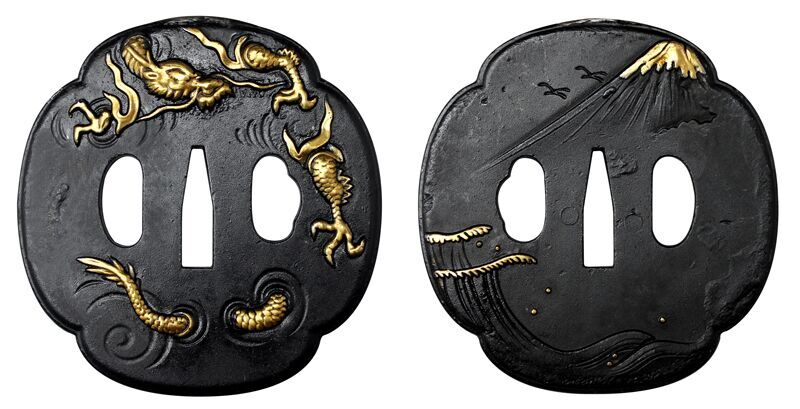 Fugaku is another word for mount Fuji "abundant mountain" and here its spirit takes form in the shape of a Dragon Kami ascending to the heavens. Symbolizes success.
Fugaku is another word for mount Fuji "abundant mountain" and here its spirit takes form in the shape of a Dragon Kami ascending to the heavens. Symbolizes success.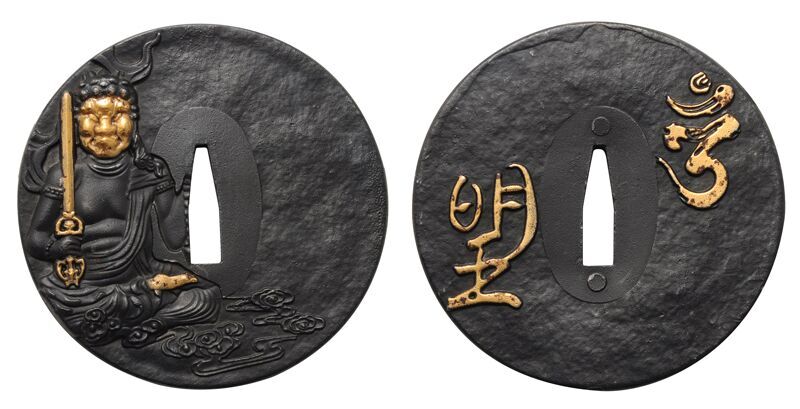 Myouou was the King of Wisdom, transmuting anger and fury into salvation and holds a demon subduing sword of gold. The kanji on the reverse side reads "Bright King"
Myouou was the King of Wisdom, transmuting anger and fury into salvation and holds a demon subduing sword of gold. The kanji on the reverse side reads "Bright King"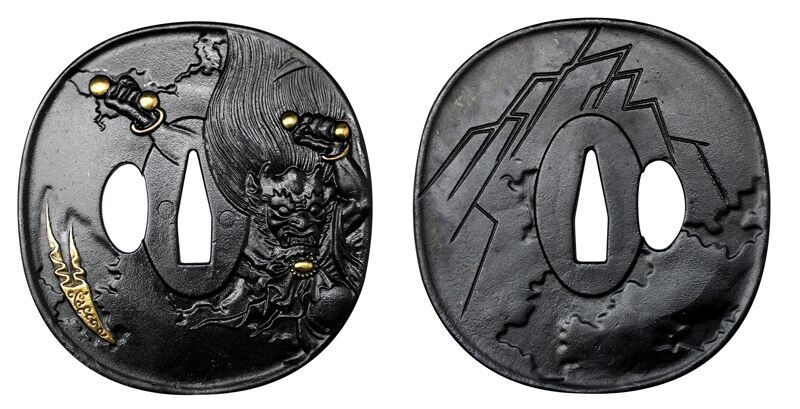 Raiden is the Japanese Kami of Lightning - on on side he is seen beating a drum to summon a storm, on the other side, lightning flashes. This tsuba represents speed and power.
Raiden is the Japanese Kami of Lightning - on on side he is seen beating a drum to summon a storm, on the other side, lightning flashes. This tsuba represents speed and power.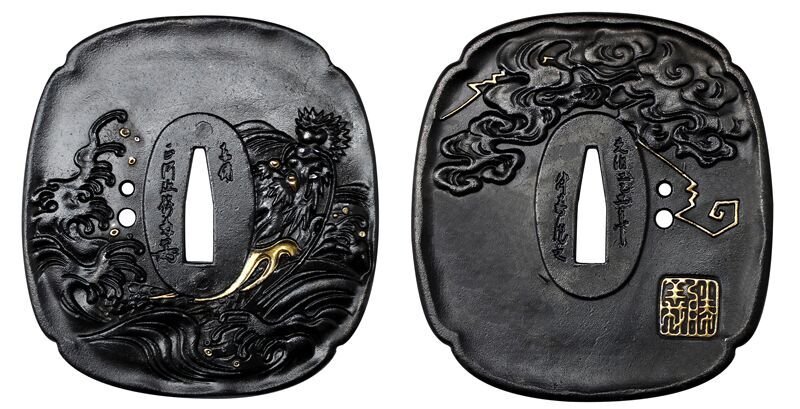 Kaitatsu means "standing sea" and combines 3 elements, the firebird phoenix, a tsumai and a wave to suggest ferocity and turbulence.
Kaitatsu means "standing sea" and combines 3 elements, the firebird phoenix, a tsumai and a wave to suggest ferocity and turbulence.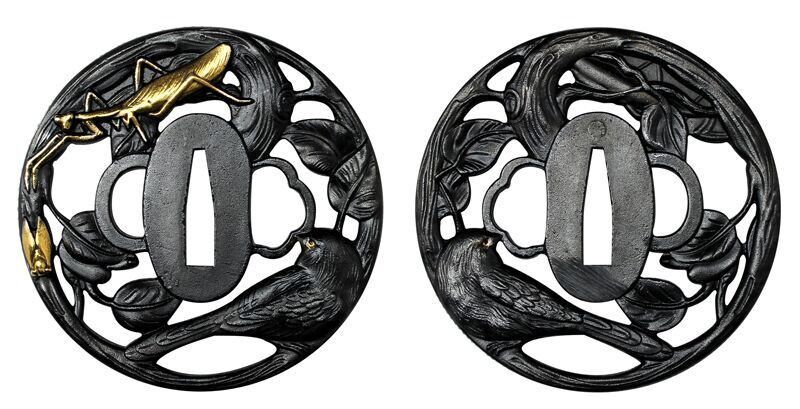 Suzume means sparrow and Kamakiri is Japanese for the Praying Mantis in this classic warrior theme of predator vs prey, which is also a predator in its own right (in the tsuba, it is hunting a cicada)
Suzume means sparrow and Kamakiri is Japanese for the Praying Mantis in this classic warrior theme of predator vs prey, which is also a predator in its own right (in the tsuba, it is hunting a cicada)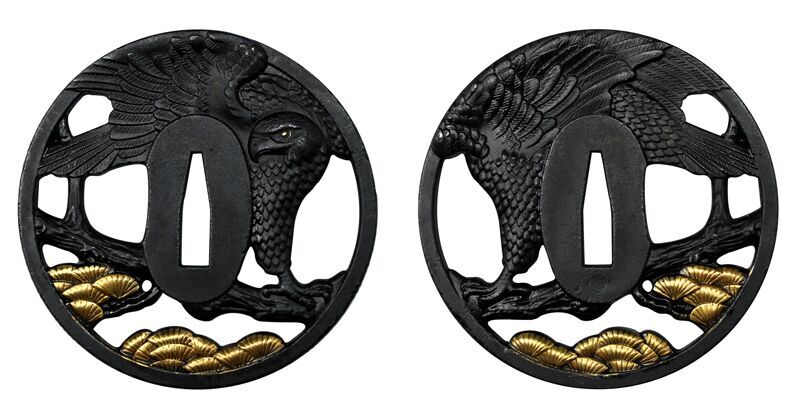 Hitaka means "Sun Hawk" - and in this tsuba design the fierce hawk is alighting on the bough of a pine tree dappled with golden sunlight.
Hitaka means "Sun Hawk" - and in this tsuba design the fierce hawk is alighting on the bough of a pine tree dappled with golden sunlight.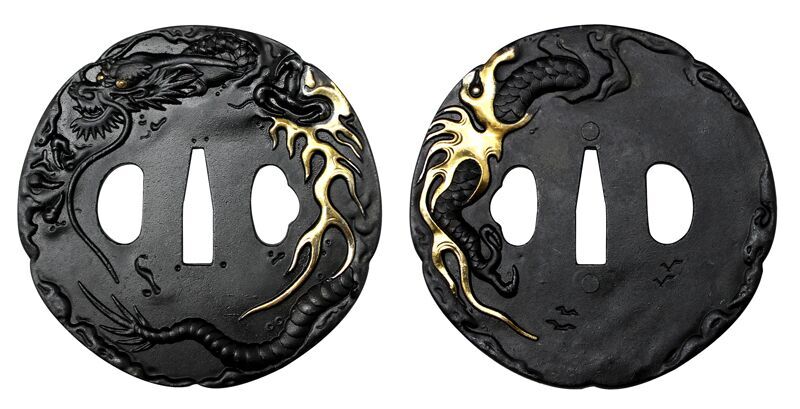 "Ryujin" means the Dragon God King, the mightiest of all Dragons. The tsuba depicts this legendary figure with a trail of golden fire billowing out behind him as he flashes across the sky.
"Ryujin" means the Dragon God King, the mightiest of all Dragons. The tsuba depicts this legendary figure with a trail of golden fire billowing out behind him as he flashes across the sky.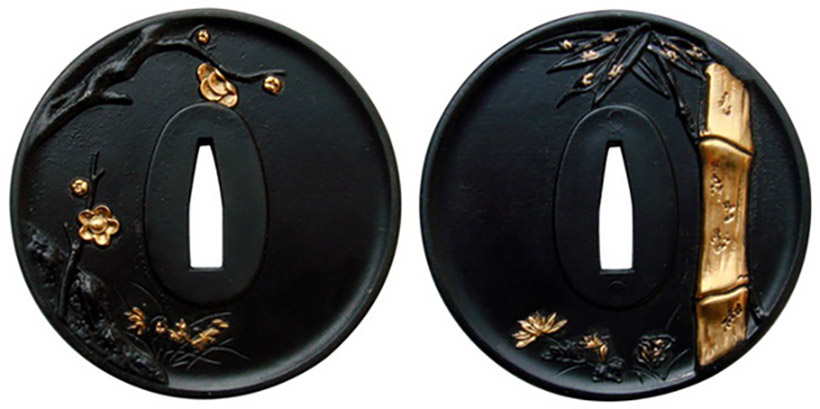 The Golden Bamboo tsuba is a classy, traditional Japanese themed tsuba that symbolizes strength, purity and prosperity. For those who prefer a more subtle and beautiful styled theme
The Golden Bamboo tsuba is a classy, traditional Japanese themed tsuba that symbolizes strength, purity and prosperity. For those who prefer a more subtle and beautiful styled theme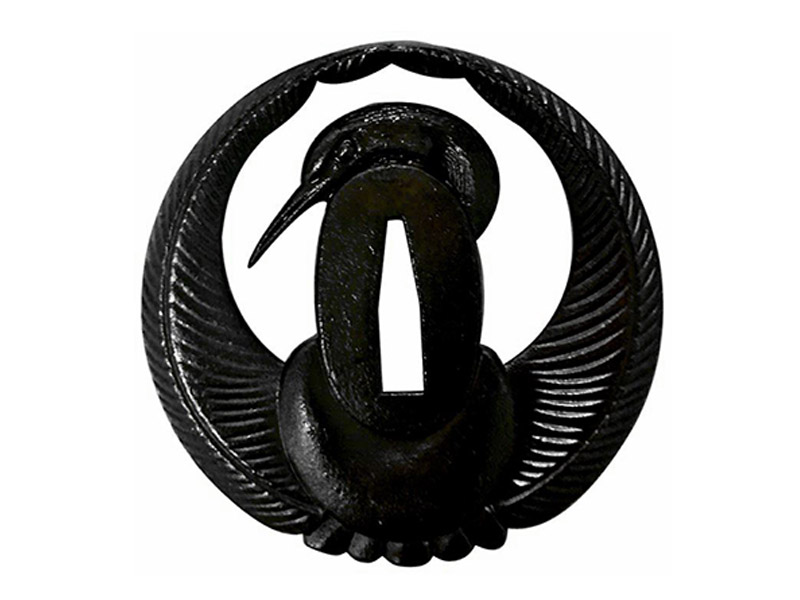 The Black Crane is another very traditional Japanese themed, simplistic tsuba that symbolizes good fortune and a long, happy life.
The Black Crane is another very traditional Japanese themed, simplistic tsuba that symbolizes good fortune and a long, happy life.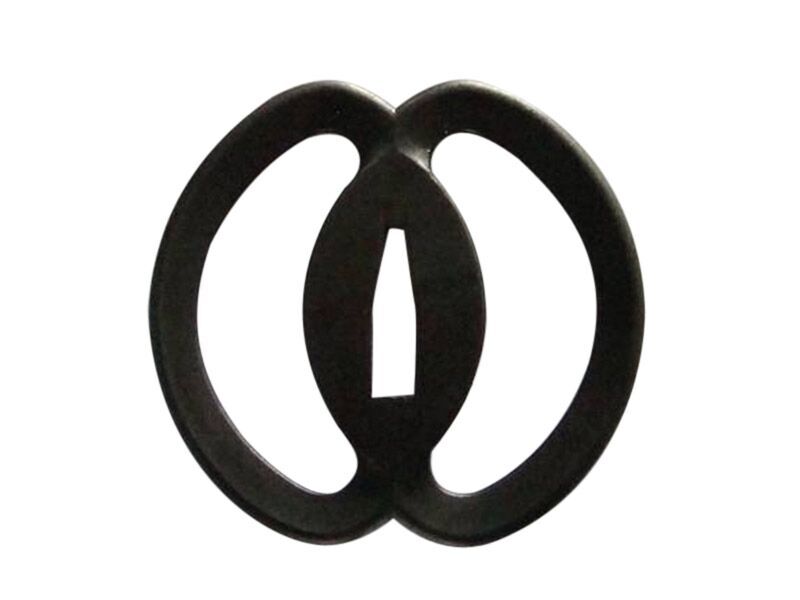 Classic Musashi Tsuba: A basic, lightweight tsuba originally designed by the legendary Ronin Miyamoto Musashi.
Classic Musashi Tsuba: A basic, lightweight tsuba originally designed by the legendary Ronin Miyamoto Musashi.Step Three: Custom Tsuka Options
Most of the Ryujin custom katana come with a selection of 8 different tsuka (handle) ito (thread) wrap colors made from synthetic silk/rayon (the only exception is the slightly cheaper semi-custom option, which allows tsuba and saya customizations only).
Generally speaking when the color option is available it is best to try and match the color of the tsuka to that of the saya in the next selection, though there are a few neutral colored saya that will work with any tsuka ito color option.
 Red Ito Wrap
Red Ito Wrap White Ito Wrap
White Ito Wrap Navy Blue Ito Wrap
Navy Blue Ito Wrap Black Ito Wrap
Black Ito Wrap Green Ito Wrap
Green Ito Wrap Purple Ito Wrap
Purple Ito Wrap Brown Ito Wrap
Brown Ito Wrap Gold Ito Wrap
Gold Ito WrapStep Four: Custom Saya Options
The saya is the sheathe housing the sword when not in use and was typically worn with the edge facing upwards and thrust through the belt and secured in place with the sageo cord.
Here is our full selection of available saya.
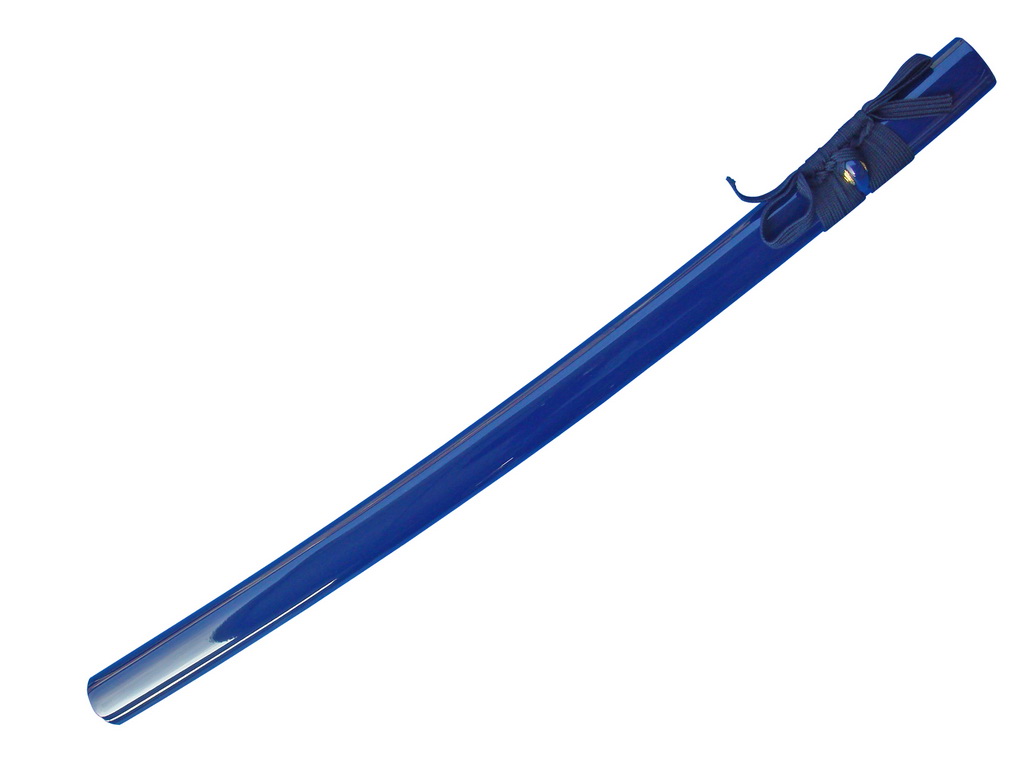 Glossy Blue Saya - usually looks best when combined with a blue or black tsuka.
Glossy Blue Saya - usually looks best when combined with a blue or black tsuka.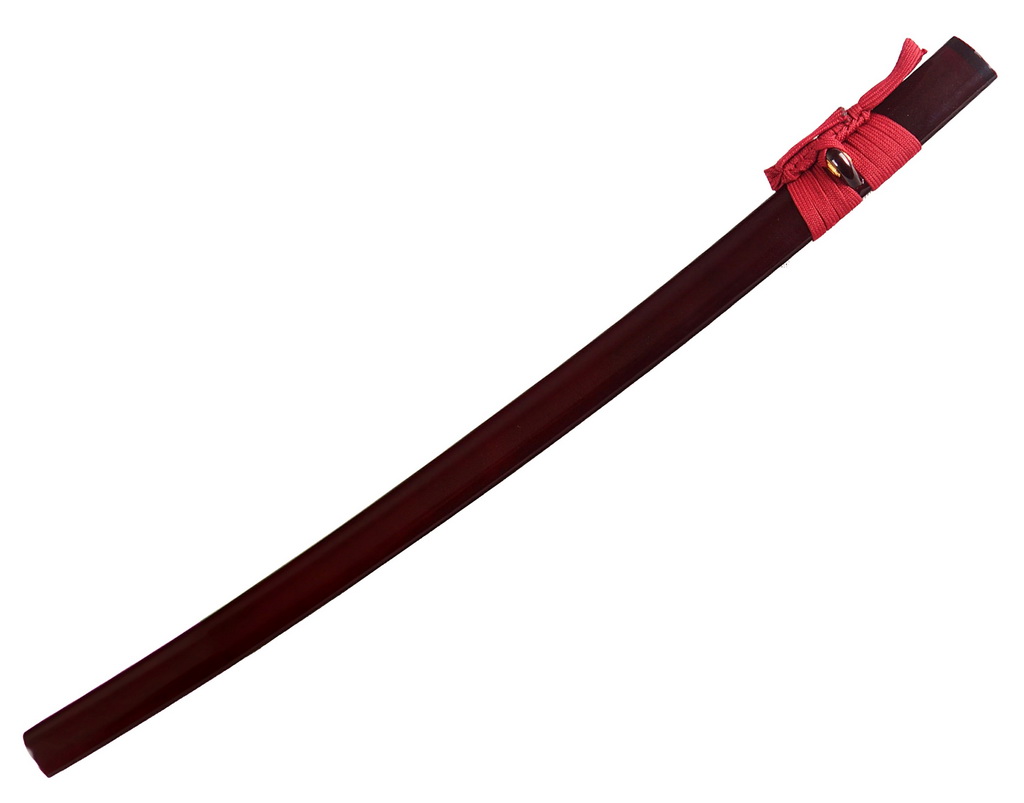 Slightly obscure 'Burgundy' Color. Goes well with red or black tsuka.
Slightly obscure 'Burgundy' Color. Goes well with red or black tsuka.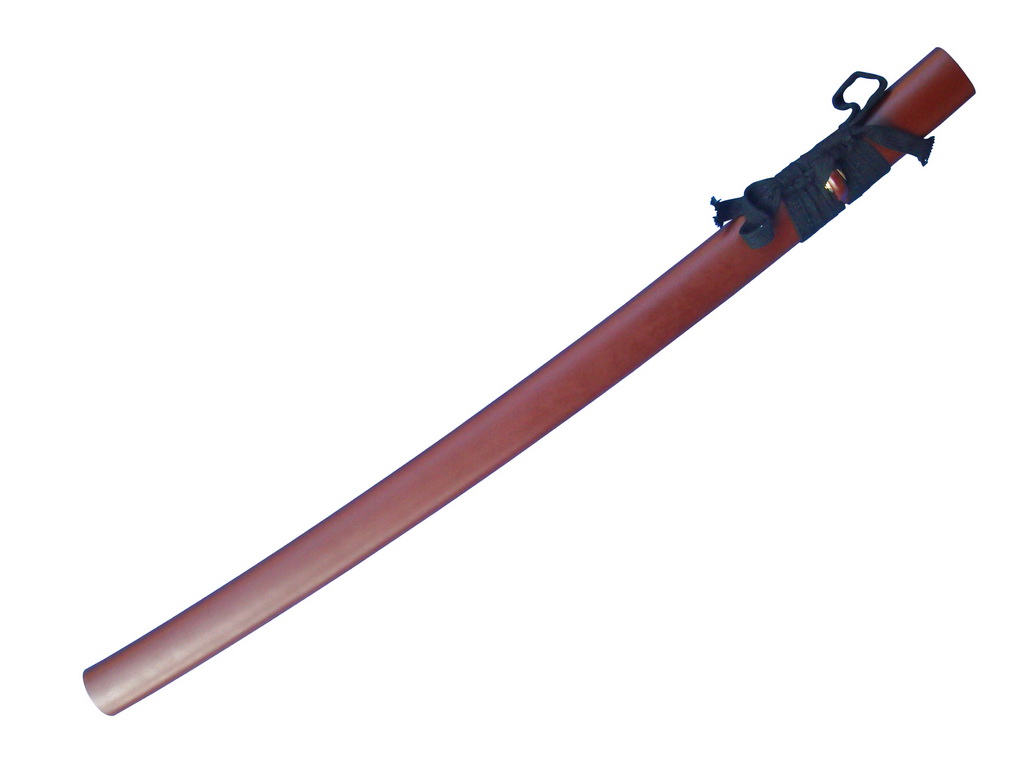 A Matt Dark Reddish color - subtle and unique.
A Matt Dark Reddish color - subtle and unique.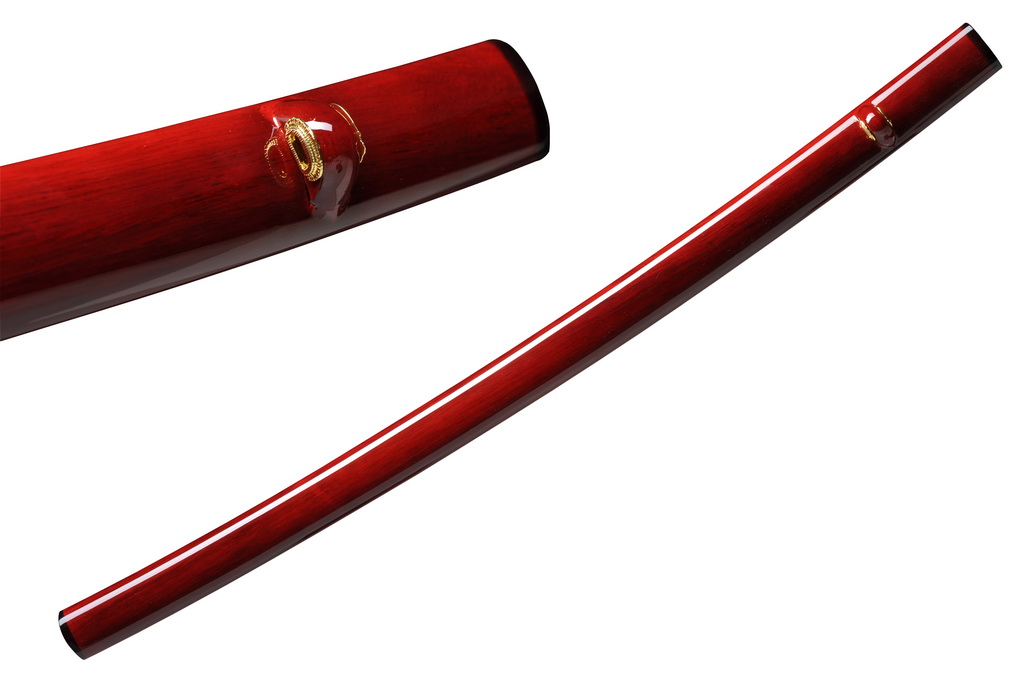 Glossy Redwood Style Saya
Glossy Redwood Style Saya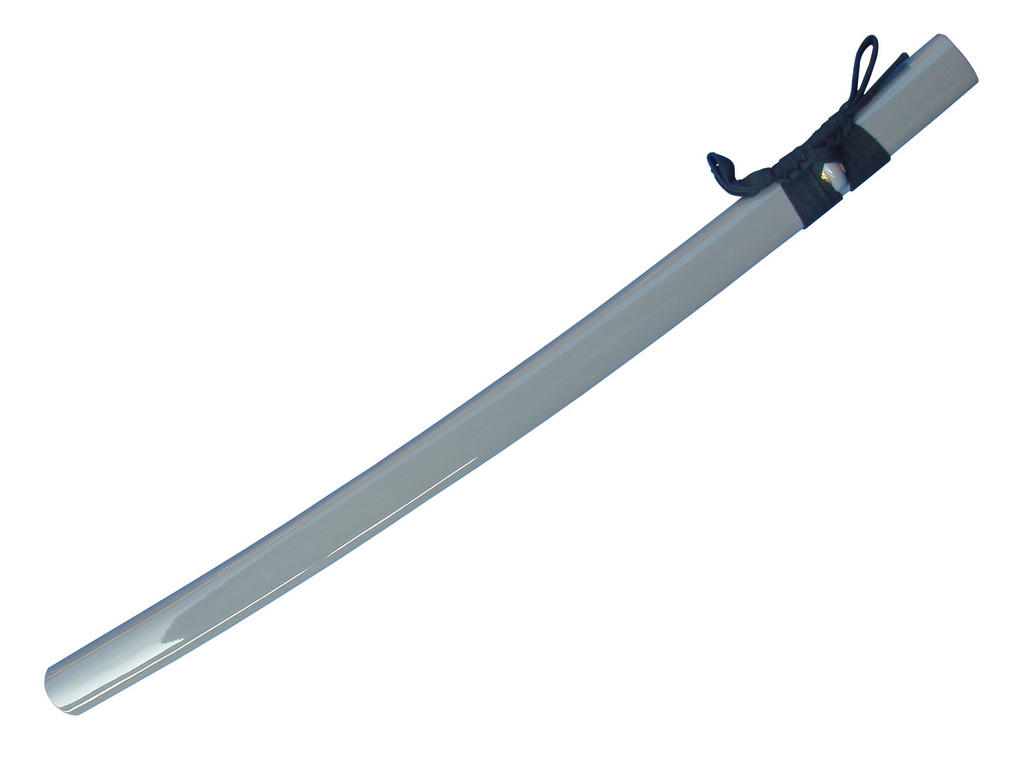 'Gun Metal Grey'
'Gun Metal Grey'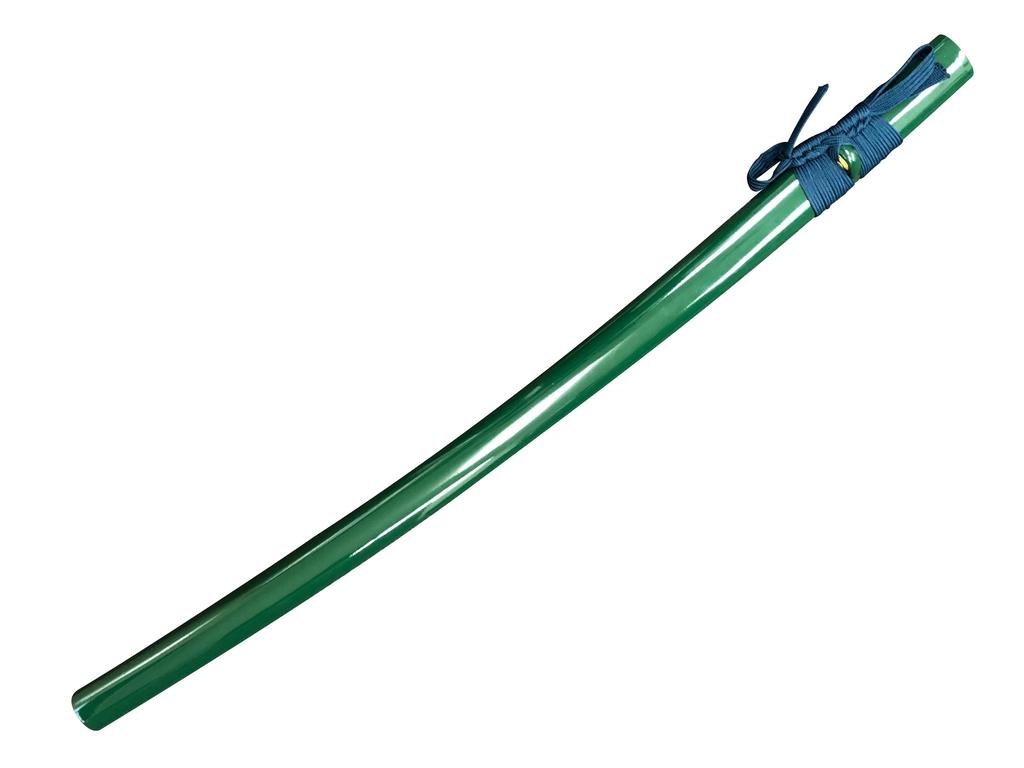 Forest Green. Best with a black or of course green or even blue tsuka.
Forest Green. Best with a black or of course green or even blue tsuka.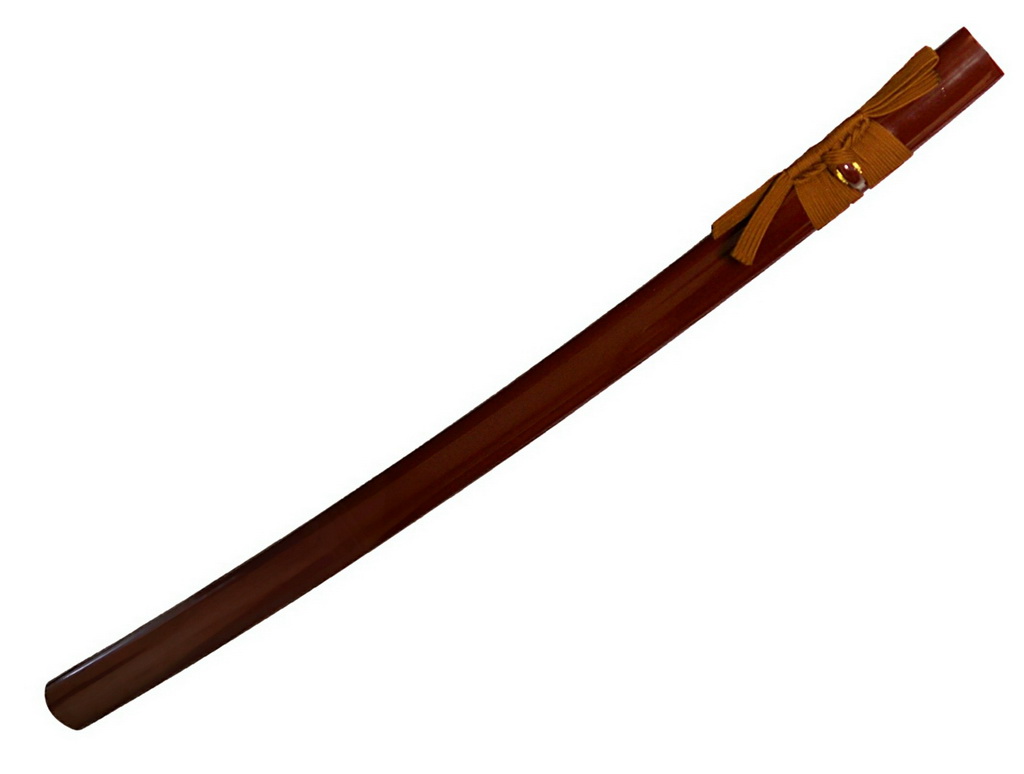 Glossy Brown Saya with brown sageo. Perfect match for the brown tsuka, but will also work well with many other colors.
Glossy Brown Saya with brown sageo. Perfect match for the brown tsuka, but will also work well with many other colors.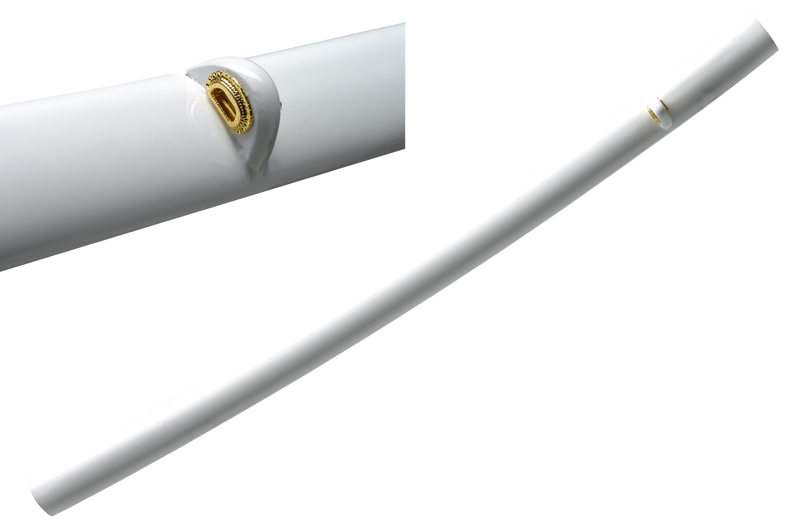 Glossy White Saya. Careful, these stain easily but looks almost 'holy' when combined with the right tsuba and a white tsuka
Glossy White Saya. Careful, these stain easily but looks almost 'holy' when combined with the right tsuba and a white tsuka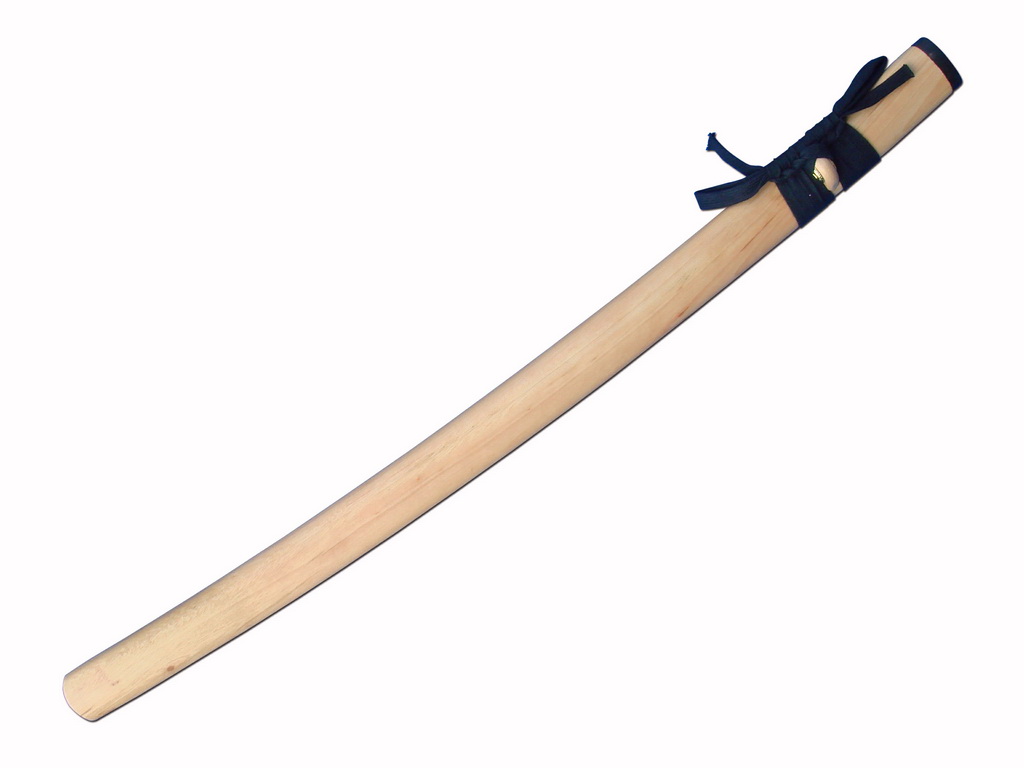 Basic Woodgrain finish (Shirasaya style). Pretty much works with ANY color tsuka.
Basic Woodgrain finish (Shirasaya style). Pretty much works with ANY color tsuka.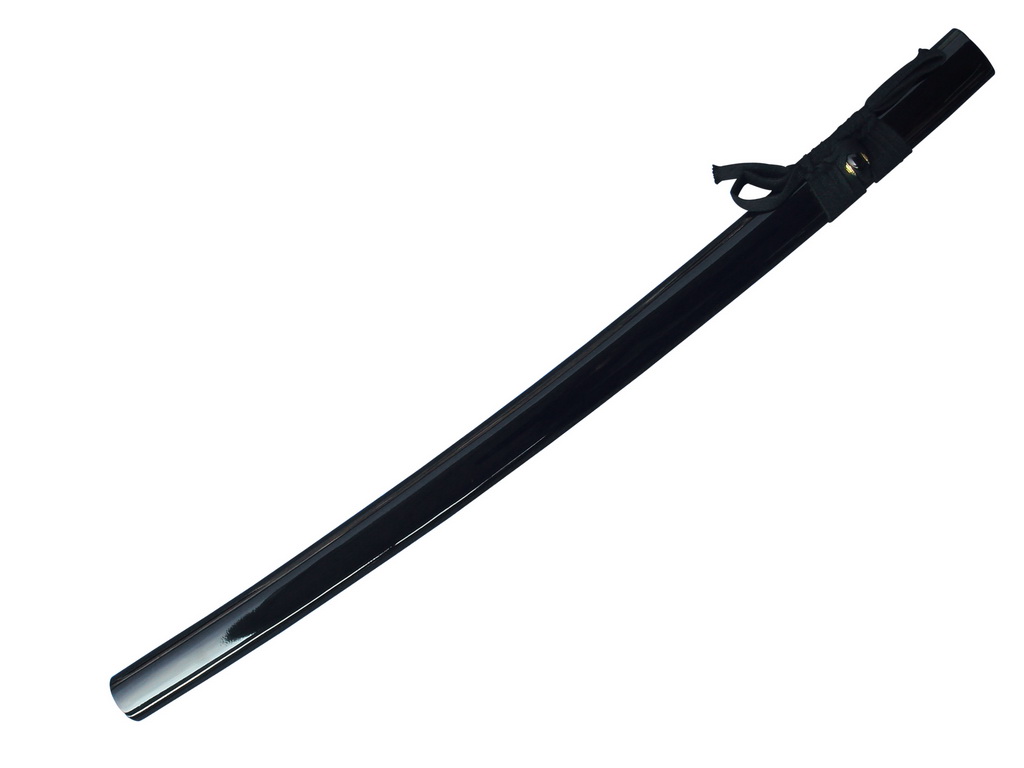 Basic Glossy Black Saya
Basic Glossy Black Saya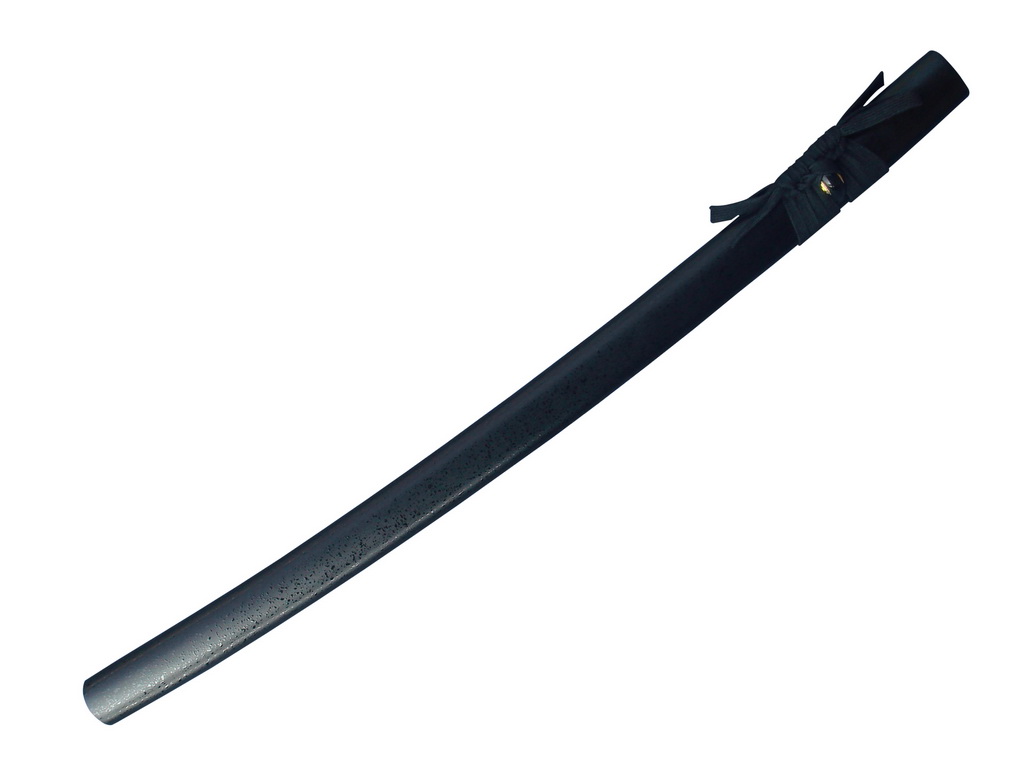 Textured Black Saya (Ishime)
Textured Black Saya (Ishime)Close Ups of the Two Black Sayas
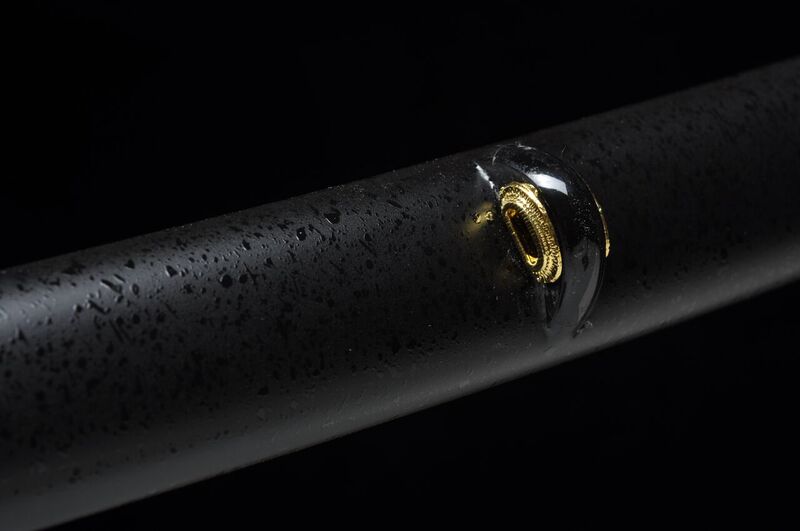 Textured Black Finish Saya: Rather than a glossy finish, the surface of the saya is textured to minimize the appearance of fingerprints and scratches from rough handling.
Textured Black Finish Saya: Rather than a glossy finish, the surface of the saya is textured to minimize the appearance of fingerprints and scratches from rough handling.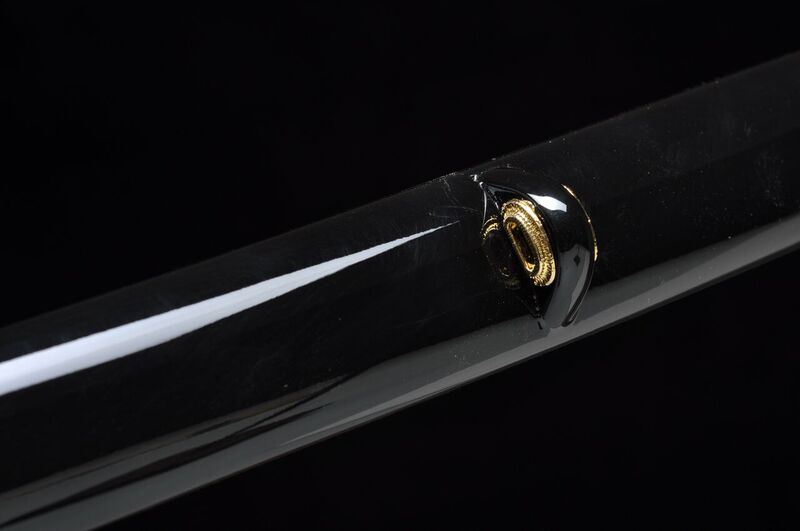 Black Glossy Saya: A standard black shellac coated high gloss saya. A neutral, common design feature.
Black Glossy Saya: A standard black shellac coated high gloss saya. A neutral, common design feature.Putting it all Together
We have deliberately restricted the number of options available on our version of the Ryujin custom katana to components that we KNOW not only look good, but work well and make it hard to accidentally design an ugly looking sword.
That said, here are some tips:
- Using the Musashi tsuba on a no-hi blade tends to create a sword with forward balance, making it a slightly more powerful cutter.
- Try to keep colors consistent when possible. When in doubt, use a neutral saya such as the natural wood finish or a black saya.
- In general, bright tsuka work well with either the same colored saya (i.e. blue and blue, red and red) or with a neutral one. Conversely, if you pick a sparkling brown or red saya, black tsuka works a treat.
- Pick the tsuba as the central theme and build the other two customizations around it. The tsuba is the 'heart' of the design.
To order, please visit the Ryujin Custom Katana page in our store HERE.
We hope the Ryujin Custom Katana Gallery has been helpful. To return to the Review, click here


